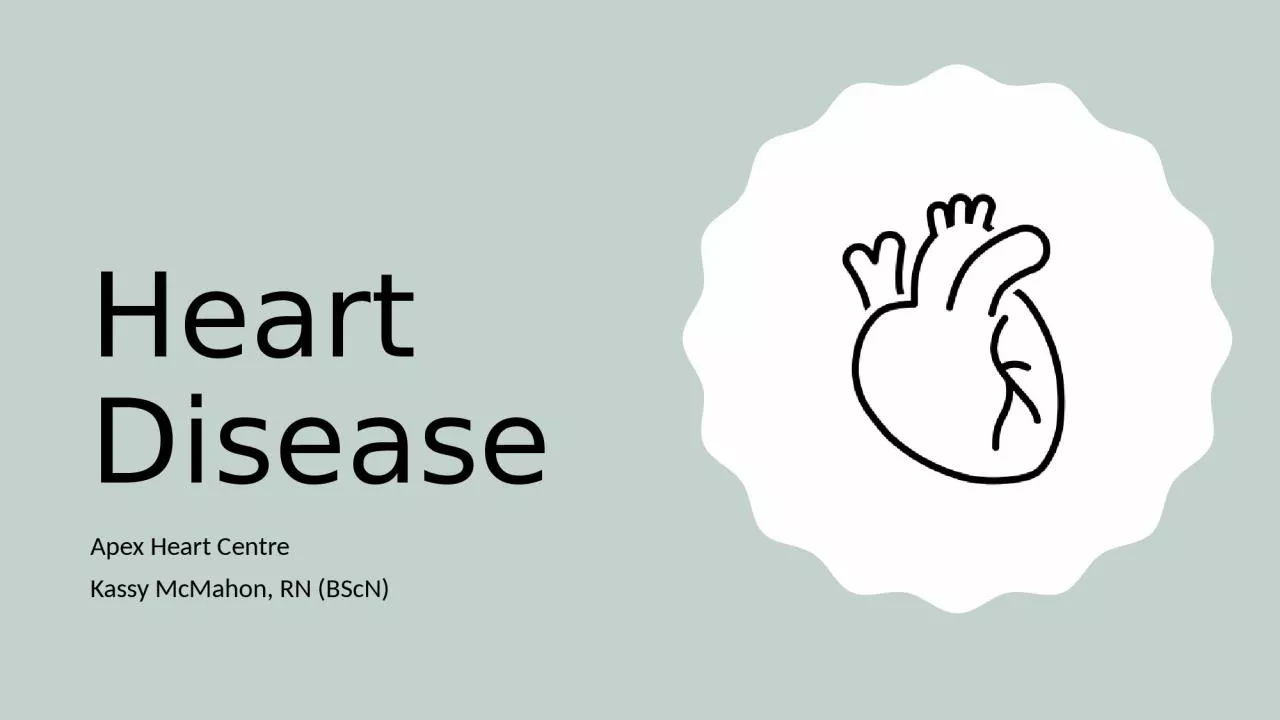PPT-Heart Disease Apex Heart Centre
Author : maisie | Published Date : 2022-07-01
Kassy McMahon RN BScN Statistics Heart disease is the second leading cause of death in both males and females in Canada Men are 2 times more likely to suffer
Presentation Embed Code
Download Presentation
Download Presentation The PPT/PDF document "Heart Disease Apex Heart Centre" is the property of its rightful owner. Permission is granted to download and print the materials on this website for personal, non-commercial use only, and to display it on your personal computer provided you do not modify the materials and that you retain all copyright notices contained in the materials. By downloading content from our website, you accept the terms of this agreement.
Heart Disease Apex Heart Centre: Transcript
Download Rules Of Document
"Heart Disease Apex Heart Centre"The content belongs to its owner. You may download and print it for personal use, without modification, and keep all copyright notices. By downloading, you agree to these terms.
Related Documents














